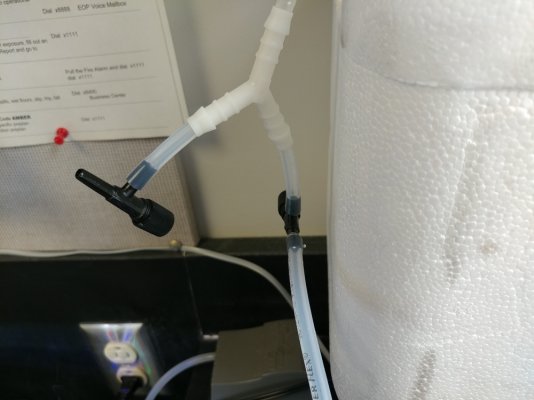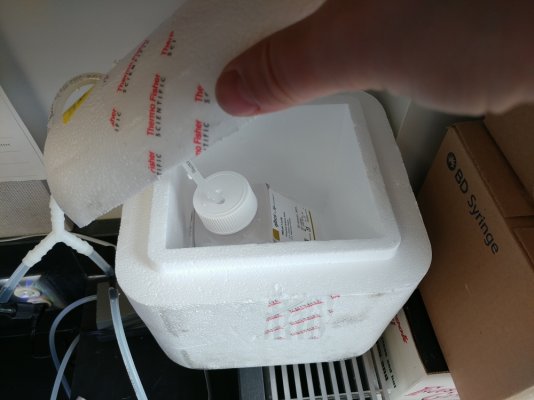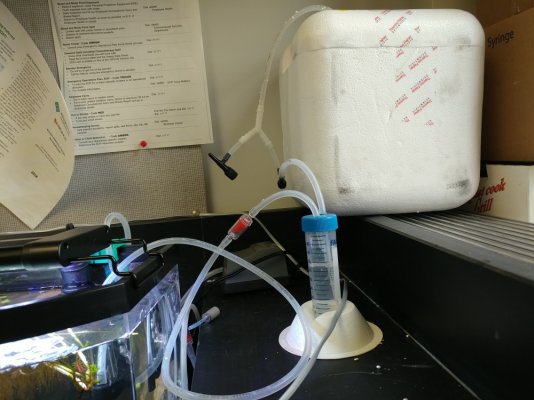I came across this old post a little while ago because I was brainstorming ways to inject a little CO2 into my planted tank at work. I work in a lab and always have dry ice around.
I think I've worked out a pretty safe and effective way to use dry ice for a diy CO2 system. There is significant potential for dangerous explosions, though, so try it at your own risk.
The third photo is all the parts and pieces. I have an insulated container to keep my vessel full of dry ice cold, two adjustable valves, one to control flow to the tank, one as a pressure release, a bubble counter, and an airstone in the tank.
The second photo is inside the cooler. I have a 500 ml PTFE bottle with a tight-fitting lid that I fill about half way with dry ice. I run a piece of tygon tubing through a hole in the lid and out through another hole in the lid of the cooler.
The first picture is the plumbing that allows the system to be fairly safe (I think). I have a y fitting with two adjustable valves, the valve running to the bubble counter I leave fully open unless the volume of dry ice is so low that I am not getting enough pressure to push a bubble through to the airstone. I use the second valve to regulate the pressure in the 500 ml bottle and thus control the flow.
Keeping the pressure vessel inside the cooler keeps everything cold and slows the sublimation of the dry ice to a manageable rate.
It requires a little fiddling after I first fill the bottle with dry ice, but once everything is loaded and the temp inside the cooler is equilibrated, and the valves are adjusted, I get a fairly steady input of CO2 to the tank. And since both valves are always open, and bleeding off pressure from the dry ice vessel, there's little chance of a rupture (and if pressure did start to build, the tubing entering the y fitting would be the first connection to fail at a not dangerous amount of pressure.)
It's not a set it and forget it system, but it works ok for something I essentially cobbled together for free from spare parts around the lab. I'm happy with it for now!



